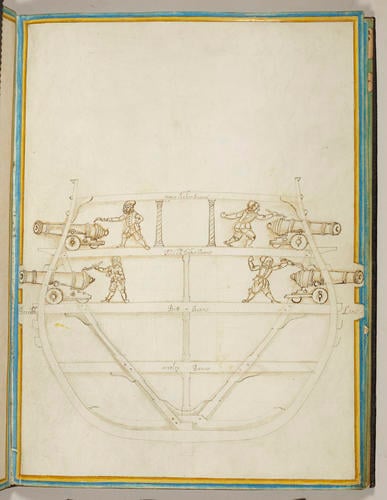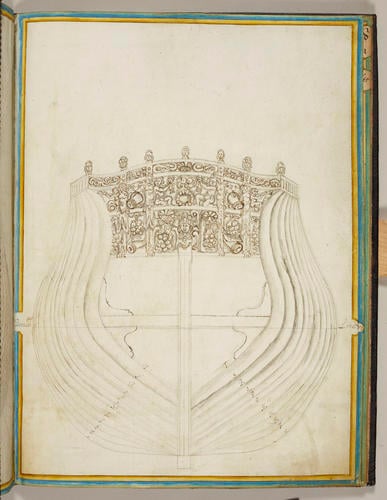-
1 of 253523 objects
The Ship London on her first voiadge ... 1657
38.7 x 29.8 x 2.0 cm (book measurement (conservation)) | RCIN 1047387

The Ship London on her first voiadge . . 1657

The Ship London on her first voiadge . . 1657




-
HMS London was built in 1656 at Chatham by Captain John Taylor, and first launched in June of that year. The ship was a second-rate ship of the line, with 76 guns over three decks. Originally built during the period of the Commonwealth, the ship gained fame when it formed part of the fleet that brought Charles II back from Holland to England in 1660: it carried Charles II's younger brother James, Duke of York, later James II. The ship was accidentally blown up in the Thames estuary in 1665, killing most of the crew. The event was recorded by Samuel Pepys in his diary. On 8 March 1665 he wrote:
'This morning is brought me to the office the sad newes of “The London,” in which Sir J. Lawson’s men were all bringing her from Chatham to the Hope, and thence he was to go to sea in her; but a little a’this side the buoy of the Nower, she suddenly blew up. About 24 [men] and a woman that were in the round-house and coach saved; the rest, being above 300, drowned: the ship breaking all in pieces, with 80 pieces of brass ordnance. She lies sunk, with her round-house above water. Sir J. Lawson hath a great loss in this of so many good chosen men, and many relations among them. I went to the ‘Change, where the news taken very much to heart.'
The wreck was rediscovered in 2008 and has been partially excavated for archaeological analysis.
This book, created in 1657, comprises three drawings and a list of the ordnance on board. The drawings were done in pen and ink with ink washes on vellum. The first drawing shows the positions of the gun decks, complete with sailors firing canons. The other two drawings show the prow and stern of the ship. All three drawings combine an interesting mixture of technical and decorative detail. The final leaf records the types of canon on the ship, their locations and weights. A note at the bottom of the page calculates that the weight of the ordnance on board was 116 tonnes.
The leaves are bound in black sheepskin with gold tooling. A distinctive shelf mark on the fly leaf records that this book was in Charles II's library at Whitehall. The binding was later stamped with the arms of William III (1689-1702).Provenance
Listed in Charles II's library at Whitehall (shelf mark F:6), and has probably been in royal hands ever since
-
Measurements
38.7 x 29.8 x 2.0 cm (book measurement (conservation))
39.0 x 1.5 cm (book measurement (inventory))
Category